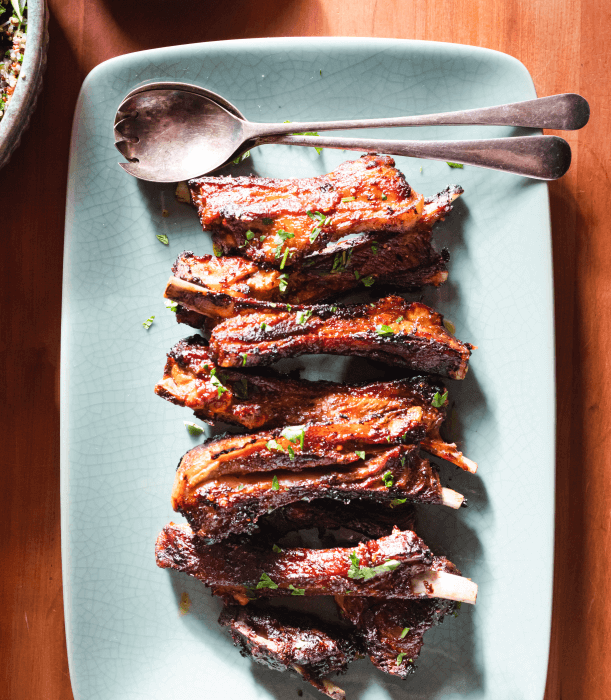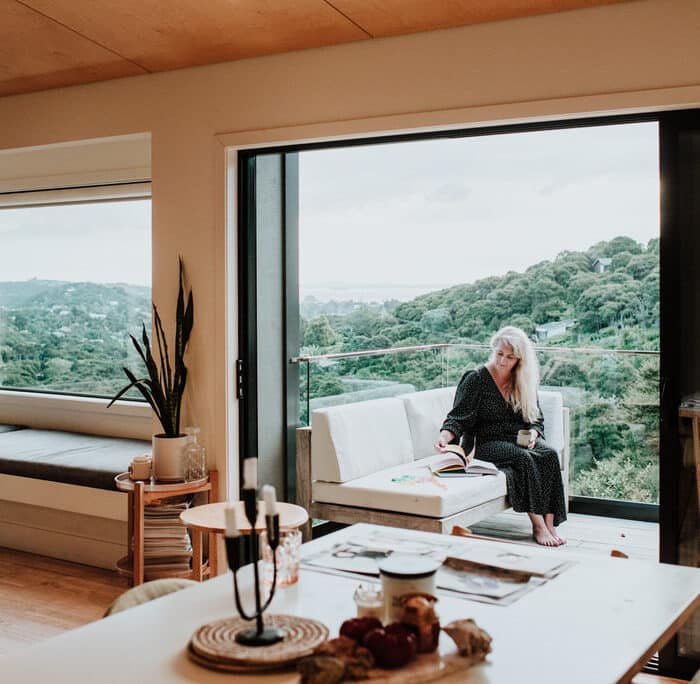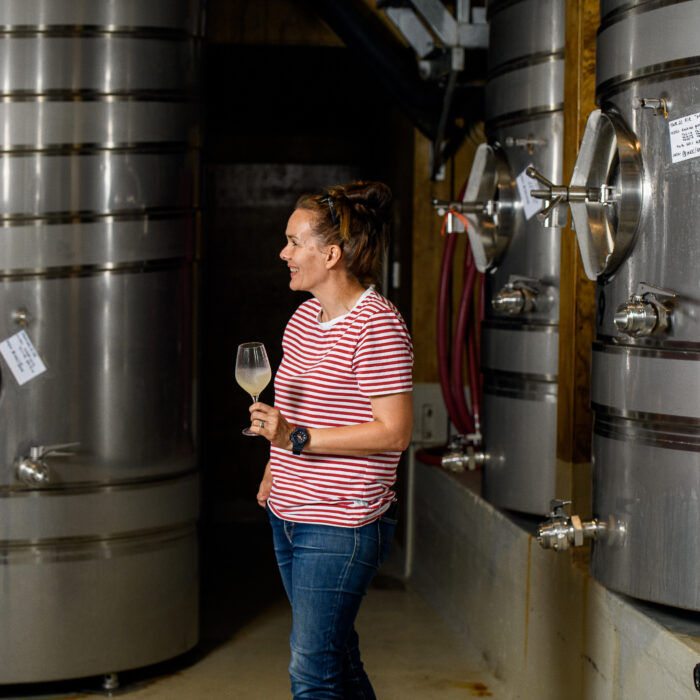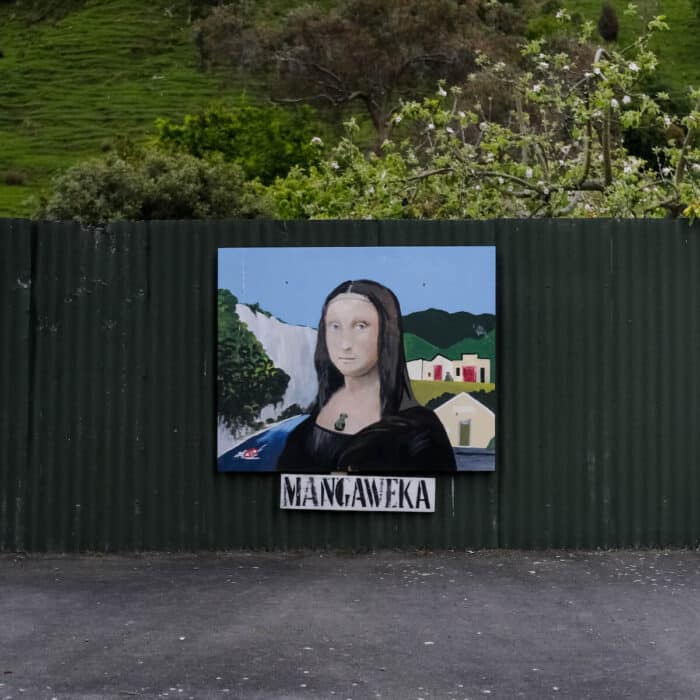10 July 2022
By River and Road
Kei te Taiao. Back Roads.
Writer: SIONAINN MENTOR-KING
Photographer: MICHELLE HEPBURN
Tracey Marshall
Tracey Marshall, 55, of Te Āti Haunui-a-Pāpārangi, Ngāti Pamoana, was born and raised on the Whanganui River Road. After living overseas, this mokopuna of the land has returned to her papa kāinga and taken over the mail run.

Tracey by her van.
What was it like growing up on the Whanganui River? The fondest memory I've got is having a big whānau around. Having that close connection with people, especially along the river, you never lose it. After living in Sydney for so long, I realised how rich we are. We have each other, and we have the river. The road goes from Whanganui all the way up to Pīpīriki. It travels along the river, which is the main artery for them up there. There are several beautiful marae along the way with lots of people connected to each.
Are there many people living on the road today? It's a really small community. When I was a child there were five schools up there; now there's only one. There would have been 2,000 of us when I was growing up; there's probably only 200 now along the whole road. Not a lot of new people come in because it's mostly still Māori-owned land, passed down through generations. Our family home is up there, but we have to go away to work. My sister's a school principal; my brother, he has to go away to work. Myself, I'm having to come into town, except I get to travel back up here and work, which is a great thing.
How did you come to take on the mail run? I worked in Sydney for twenty-eight years. When I came back eleven years ago, I wanted to purchase the mail run, but someone else had it. I said to him, "Look if you ever go to sell it, let me know." And he came to me two years ago and said, "Yeah, I'm ready to let it go." So I grabbed it.
What does it involve? Every day is quite different. I start at 5:30am and sort the mail at NZ Post. I'll hang around until the shops open to pick up anything people need, then I head up and deliver the mail and newspapers along the way. I'm related to the majority of people living on the River Road, so I know everyone. They're always really happy to see me. It takes about four hours, and I take my time. I dawdle along and look around or listen to podcasts. I can't say I get bored at all.

Do people still write letters? My aunties up there still write letters. But not really, no. It's dropped dramatically. They get their electricity bills in the post, but they don't buy a lot of junk, even the younger ones. I take up probably more dog biscuits than anything else. They have their own gardens, do all their own meat. I do probably about ten parcels a day. But NZ Post has an obligation to rural New Zealand.
And you run a Mail Road tour. It's always had a tourism component because the run is on a scenic route. A guy called Mr Hammond used to do it when I was a child. He'd bring up our milk and bread and mail and anything else we needed, and he would have tourists with him. You travel along with me, and I give you some of the history. I tell you about growing up there, and you get to meet the locals. There's quite a lot to see - a lot of historical stuff: the Kawana Flourmill, the tunnel culvert, Hiruhārama Jerusalem and the convent. And there's the environment. All along the river, there's that wairua.



EAT
Rutland Arms Inn, that's pretty good. They have what they call "small plates," their take on tapas. The New Zealand lamb and the scallops with salad or their yummy vegetables are just the best. Lastly, the sticky date pudding. rutlandarms.co.nz
There's nice coffee at Aunty Marlene's, the Matahiwi Gallery and Cafe. She's doing very nice flat whites up there. matahiwi-cafe.business.site
SEE
Whanganui River Road. There's lots of old history up there, and it's really well looked after. There's the river, and then there's the road where the people and the historical sites are. It's a part of New Zealand that makes you go, "Ah, goodness!"
DO
The Mountains to Sea Cycle Trail is a must. It's a spiritual journey - Ngā Ara Tūhono in Māori means connected pathways. You're travelling the footsteps of our tūpuna from the mountains to the sea, and those of the early European settlers as well. You feel their presence, especially along the Whanganui River Road section. We call it the wairua. Personally, I think it's as good as paddling the river. All the trails are very different, which makes it one big adventure. It also brings in a bit of money for the accommodation providers along the River Road. mountainstosea.nz
There's also the Bridge to Nowhere Tour. I take tourists on the Mail Run, then I drop them at Pīpīriki and they jump in a jet boat and go about forty minutes up to the Bridge to Nowhere. It's an all-day trip. bridgetonowhere.co.nz
Glossary. Marae, the courtyard area in front of the main building, often used to describe the complex. Mokopuna, descendant. Ngā Ara Tūhono, connected pathways. Papa kāinga, principal home. Tūpuna, ancestors. Wairua, spirit. Whānau, family.



This story was produced with support from Whanganui & Partners. discoverwhanganui.nz
If you enjoyed this story, please share with someone else.
This story appeared in the Takurua Winter 2022 Edition of Shepherdess.
Get your hands on a copy.
Related Stories
Sticky Lamb Spare Ribs
I like to use the lesser-used cuts of meat when possible. They are often cheaper, and if attached to the bone (like these spare ribs) they have so much flavour.



